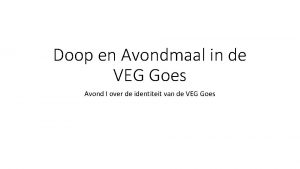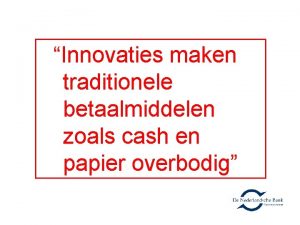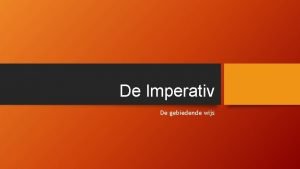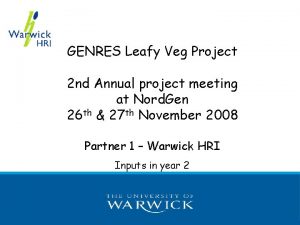Inter Veg research questions The Inter Veg project



- Slides: 3

Inter. Veg -research question(s) § ? The Inter. Veg project aims at verifying if the introduction and proper management of living mulch (LM) in vegetable production systems provides relevant agro-ecological services while allowing similar yield and quality than the sole crop systems. In more depth, the project activities want to establish if: § § § 2/26/2021 legume LM delivers a significant amount of N to the cropping system via BNF; LM contributes to reduce the risk of NO 3 losses (leaching) from the system; LM competes against weeds, avoiding or reducing mechanical weed control; LM is able to increase the presence and activities of soil arthropods (functional biodiversity indicators), change the arthropods pest/beneficial relationships, and; LM changes the production costs and the energy consumption 1

Inter. Veg – preliminary outcomes/1 § § 2/26/2021 no significant differences in yield and quality were observed in the annual LM sowed 2 to 4 weeks after cash crop transplanting. Permanent LM strips could represent a feasible option to design and manage vegetable intercropped systems. The continued presence of the LM in the field over winter (after the cash crop) may reduce the soil mineral N content during the leaching season, contributing to lower the nitrate leaching risk from the system (mainly Central Europe Countries). LM sowing time and the choice of the cultivar had a key role in the competitive success of the crop against both weeds and living mulch. Late sowing LM ensured an unfavourable environment for weeds avoiding crop suppression. 2

Inter. Veg – preliminary outcomes/2 § § § 2/26/2021 The first results obtained in the Italian cauliflower ‘scenario’ showed that LM introduction did not affect the infestation of P. brassicae, showing no detrimental effect of this technique on pest dynamics. In LM treatments, the P. brassicae parasitisation by the braconid Cotesia sp. was higher than the no LM treatment (88% and 63%, respectively). LM also showed to increase the spider and rove beetle populations, while the carabid activity density was slightly higher in the no living mulch; The LM changed the costs from +22 to -2% and total energy consumption from +14 to -4% compared to sole cropping depending on the change of management techniques in each country. Also the proportion between human power and fossil fuel consumption was changed. 3





